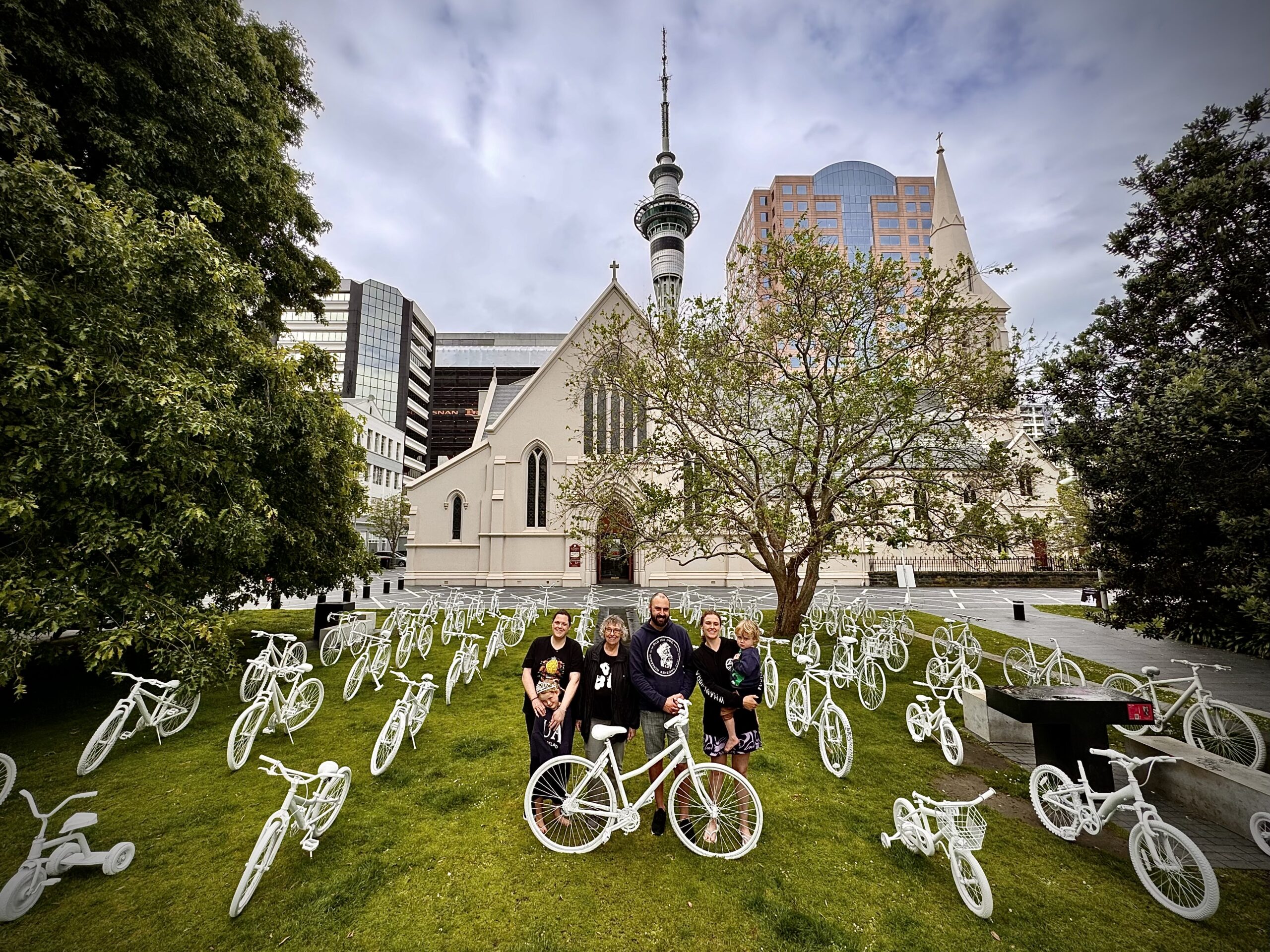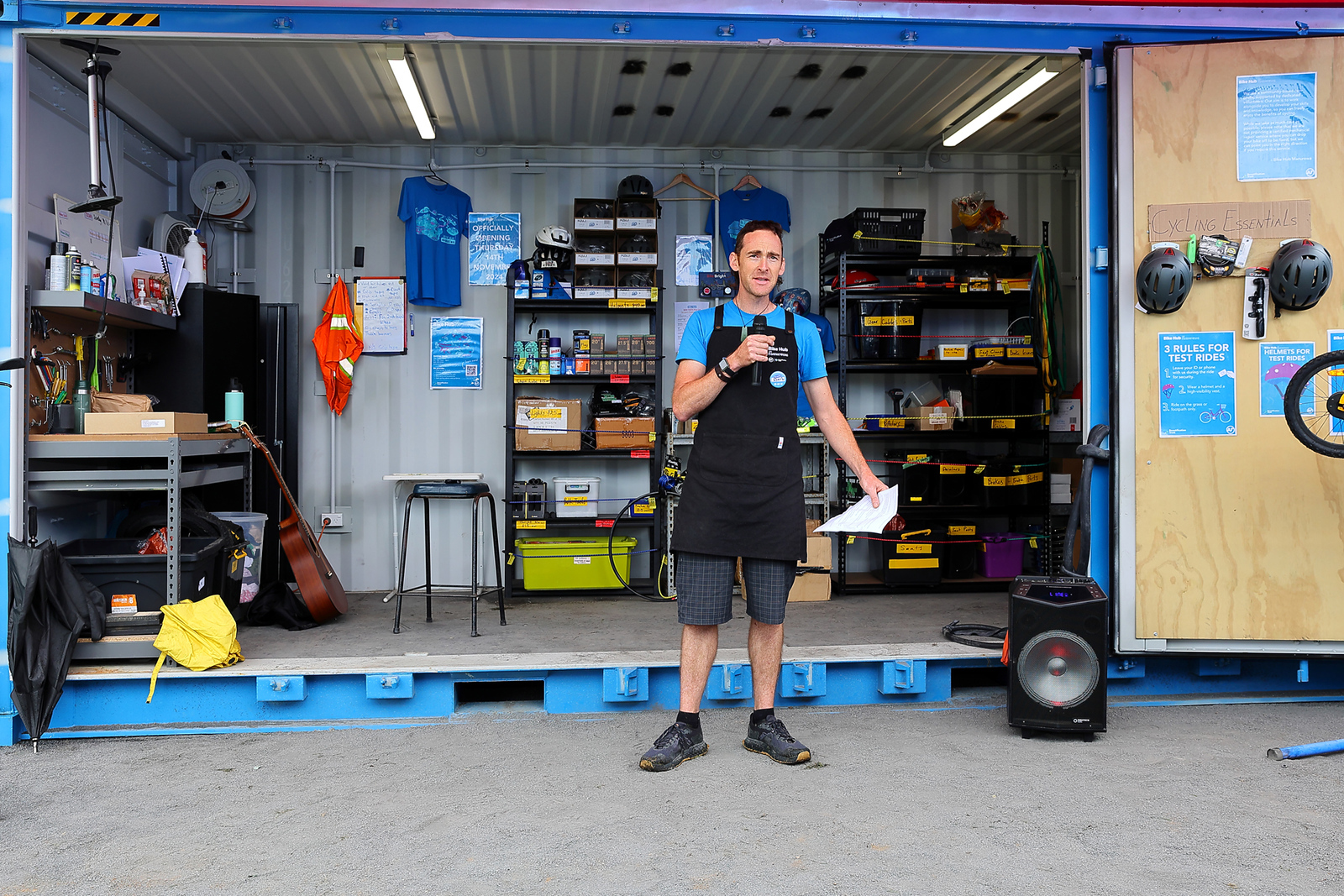With all eyes on Melbourne for crickety reasons, we spoke to new Melburnian and ex-Aucklander Di White about how moving to the city has changed her cycling life – and her hopes for Auckland’s biking future. Here’s her story:
Each day that I bike down Sydney Road, a busy arterial road leading into Melbourne’s CBD, I find myself playing a game. As I cycle alongside the tramline and busy road, I try to “beat” the other commuters. The tram stops every 30 seconds or so to let people hop on and off, and the traffic stutters along in its regular morning stop-start congestion; meanwhile, I whiz past in my bike lane. Girl, uninterrupted. Knowing that cyclists often draw the short straw compared to cars and to a lesser extent public transport, it’s hard not to feel a little bit smug.
Until recently, I would have never identified myself as a cyclist. To me, a cyclist was a person with a sleek, fancy bike, with equally sleek, fancy lycra to match. A cyclist was fast: I would admire how they managed to keep up with the cars going 50km/hr, their ability to careful weave around busses pulling in and out. Cyclists were brave, and when it came to commuting I was anything but brave.
All of this changed when I moved to Melbourne from Auckland in July 2014. Initially, buying a bike was a “good intentions” decision. I’d left Auckland and my car-driving ways behind me, and I was keen to start Melbourne on the right foot – or seat.
https://twitter.com/di_f_w/status/497980652730327041
But what began as good intentions quickly became good sense. Where I live, cycling is the quickest way for me to get to work. I live right next to a major tramline and ten minutes from a train station, yet it is quicker for me to cycle the seven kilometres to work than to take public transport or drive. As someone who really loves to sleep in as late as possible, this fact is in itself very persuasive.
https://twitter.com/di_f_w/status/577584735104294912
Then there are the economic arguments: cycling is cheaper than taking public transport, and significantly cheaper than the exorbitant cost of owning a car in Victoria (where registration alone is around $800 per year, not even factoring in the expense of running costs and buying and maintaining the car itself). Some of what you save, you can spend on goodies for the bike life.
https://twitter.com/di_f_w/status/502706442579619840
And, of course, there are plenty of physical and mental health benefits. After an exhausting and stressful day at work, nothing quite clears my head and lifts my spirits like the ride home.
All of this means nothing, though, if you don’t have the infrastructure to support cyclists – especially the ‘casual cyclist’ who isn’t confident enough to share the road with cars and buses. In this regard, I’m lucky. More often than not, I am able to cycle in a separate lane, without fear of being hit, yelled at, or both. I live close to the beautiful Merri Creek Trail, a 21km shared bike and pedestrian trial that winds through Melbourne’s northern suburbs, the perfect track for weekend adventures.
Where I live, I am not an anomaly or a nuisance, but someone who has the right to ride.
I’m fortunate to live in the inner north, where separated, permanent cycle lanes are common. But the quality and existence of cycle lanes varies: in other parts of the city, cycle infrastructure is lacking and cyclists are still forced to share the road with cars and buses or face the sometimes-fatal consequences of cycling alongside parked cars.
Even the Sydney Road cycle lane – the one I so cheerfully ride along to work – only operates during peak hours, 7-9am and 5-7pm; the rest of the time it’s reserved for parked cars, with predictably scary results. Just weeks ago this stretch of road saw another cyclist killed by a car dooring (the latest in a series of similar tragedies that prompted this policy response by the Victorian Taxi Network; there’s also a push to make it so that cars can never park there, which would make it a lot safer).
In other words, while Melbourne is definitely doing well in terms of its cycle infrastructure, like so many cities, it is not perfect, which is why Australia’s Bicycle Network and other cycle advocacy groups continue to work hard to improve conditions for Melbourne cyclists.
When I return to Auckland, I hope to maintain my cycling habit. What I see every day – and what I am proof of – is that if cities make it safe and practical for people to cycle, they will do so. I’m glad so many people in my home city (including those in Cycle Action Auckland) are working tirelessly to see in the changes that will mean cycling won’t just be a safe choice, but a fun and sensible one, too.
See more of Di’s glimpses of the Melbourne bike life below and on Twitter. And if that whets your appetite, check out our man in Melbourne for regular colourful pics (and tweets) of life on two wheels. Melbourne is also home to (among other things) the fabulously named Squeaky Wheel, a not-for-profit that aims to get women cycling, and Good Cycles, a social enterprise that combines bike repair and helping people get their balance back. Plenty of inspiration all round!
https://twitter.com/di_f_w/status/522134621740232704
https://twitter.com/di_f_w/status/517221085859704832




